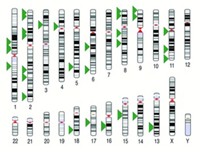Advertisement
Grab your lab coat. Let's get started
Welcome!
Welcome!
Create an account below to get 6 C&EN articles per month, receive newsletters and more - all free.
It seems this is your first time logging in online. Please enter the following information to continue.
As an ACS member you automatically get access to this site. All we need is few more details to create your reading experience.
Not you? Sign in with a different account.
Not you? Sign in with a different account.
ERROR 1
ERROR 1
ERROR 2
ERROR 2
ERROR 2
ERROR 2
ERROR 2
Password and Confirm password must match.
If you have an ACS member number, please enter it here so we can link this account to your membership. (optional)
ERROR 2
ACS values your privacy. By submitting your information, you are gaining access to C&EN and subscribing to our weekly newsletter. We use the information you provide to make your reading experience better, and we will never sell your data to third party members.
Analytical Chemistry
DNA Sequencing: Zero-Mode Waveguides Turn 10
Analytical devices allow researchers to track the sequencing of long, continuous stretches of DNA
by Celia Henry Arnaud
December 23, 2013
| A version of this story appeared in
Volume 91, Issue 51

COVER STORY
DNA Sequencing: Zero-Mode Waveguides Turn 10
A decade ago, researchers at Cornell University reported an analytical device, which they called a zero-mode waveguide, for using light to detect single biomolecules in samples of any concentration. That device was remarkably simple—just an array of nanometer-scale holes in a metal film on a fused-silica surface (Science 2003, DOI: 10.1126/science.1079700). Today, that unpretentious device is the basis of the DNA-sequencing technology from Pacific Biosciences, based in Menlo Park, Calif.
Waveguides are devices that are used to direct light and sound waves—optical fibers are one example. Zero-mode waveguides are so named because the holes, which serve as the waveguides, are smaller than the wavelength of light used, so the light doesn’t pass through the holes.
From the beginning, the Cornell team’s waveguides were intended to be used for optically monitoring the progress of DNA sequencing. “We knew the fundamental limitation in fluorescence-based sequencing would be background noise caused by other nucleotides,” says Stephen W. Turner, founder and chief technology officer of Pacific Biosciences, who was on the team that invented the zero-mode waveguides. “We needed to reduce the observation volume.”
Turner and his Cornell colleagues tried several approaches. “Most of them worked to some degree, but the zero-mode waveguide worked so well and was so much better and simpler than the others that it was the hands-down winner,” Turner says. The technology is now the heart of Pacific Biosciences’ PacBio RS II sequencing instrument.
Each waveguide in a disposable PacBio RS II reaction cell serves as a tiny vessel for a DNA-sequencing reaction. Single polymerase enzymes are immobilized in a waveguide, which provides a window to observe sequencing in real time by precisely following the incorporation of fluorescently labeled nucleotides. The prototype device had a few thousand waveguides, but today’s PacBio RS II uses reaction vessels with 150,000 waveguides that can be monitored simultaneously. The combination of the waveguide and specially designed DNA polymerases allows sequence read lengths that are thousands of base pairs long—some longer than 30,000 base pairs, which is the most among DNA sequencers.
Other sequencing devices sometimes have trouble working through DNA regions containing a lot of guanine and cytosine (GC) bases, but not the PacBio RS II. “The place where PacBio is truly amazing is its lack of GC bias,” comments Jay Shendure, associate professor of genome sciences at the University of Washington. “That, along with the long read lengths, is enabling its utility in niche applications such as accurate assembly of microbial genomes with high or low GC content, as well as accurate assembly of challenging regions of mammalian genomes.”



Join the conversation
Contact the reporter
Submit a Letter to the Editor for publication
Engage with us on Twitter